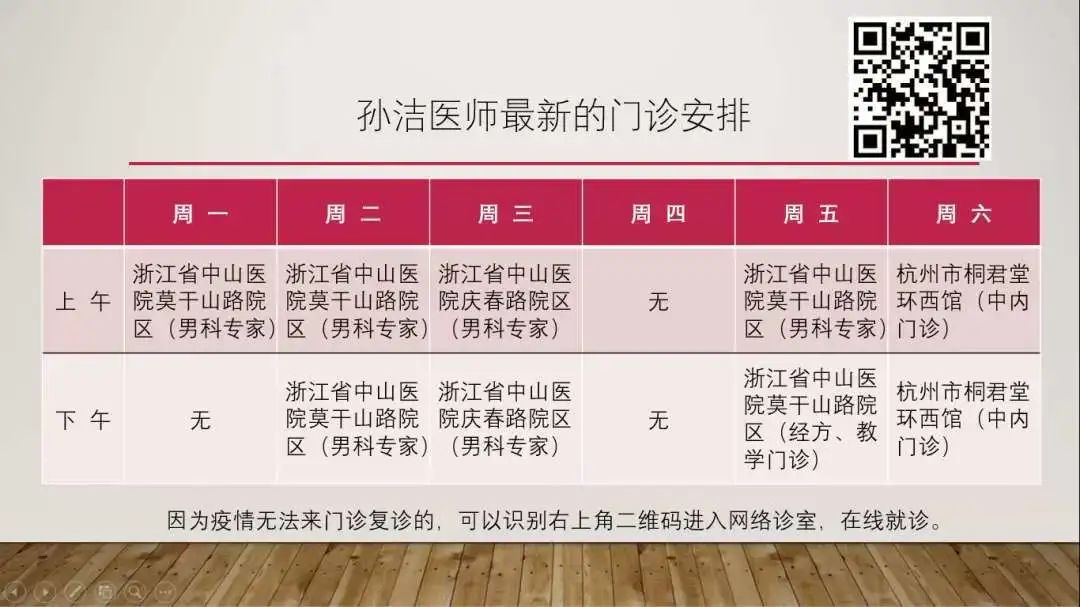
Hello everyone, welcome to “Learning TCM from the Beginning.” I am Sun Jie from the Third Affiliated Hospital of Zhejiang Chinese Medical University. Today, we will continue our study on listening to breathing in TCM diagnosis.
Normal breathing is smooth and even, and typically, the sound of breathing is not audible. Breathing is the external manifestation of a person’s vital energy (qi), so if a patient breathes normally, it indicates that the physical body is ill but the qi is not affected; if breathing is abnormal, it indicates that both the physical body and qi are ill. Patients with external pathogens often exhibit coarse and rapid breathing, commonly associated with heat syndrome and excess syndrome; while those with internal injuries and insufficient righteous qi show weak and slow breathing, often associated with deficiency syndrome and cold syndrome. In general, coarse breathing indicates excess, while weak breathing indicates deficiency. However, there is also a need to differentiate between true and false conditions. For example, after a prolonged illness, if the lung and kidney qi is exhausted, it may also present as coarse breathing, but this is a false excess condition, characterized by intermittent and rootless coarse breathing; or in cases of warm diseases transmitting to the heart, there may be weak and dull breathing, which should not be misinterpreted as deficiency syndrome, as this is a false deficiency caused by heat obstructing the clear orifices, leading to impaired breathing. When breathing becomes so weak that it is difficult, with each breath being shallow and short, it feels as if there is not enough breath, which is termed “shortness of breath insufficient to sustain life.” This is a critical condition of severe injury to the original qi, where yin and yang are separated. In addition to these changes in breathing, pathological breathing can also present with symptoms such as wheezing, asthma, dyspnea, shortness of breath, and weak breath.

Let’s first look at asthma. Asthma refers to difficulty in breathing, characterized by shortness and urgency, even with mouth breathing and shoulder elevation, and flaring of the nostrils, making it impossible to lie flat. Mouth breathing is understandable; it indicates that breathing through the nose alone is insufficient, necessitating the opening of the mouth to assist in breathing. Shoulder elevation means raising the shoulders during inhalation to aid breathing, indicating severe difficulty in breathing. Flaring of the nostrils indicates difficulty in breathing as well. Previously, we discussed the observation of the nose, noting that when lung heat is severe, it can also cause nostril flaring. During this time, asthma may also be present, and the formula Ma Xing Shi Gan Tang (Ephedra, Apricot Kernel, Gypsum, and Licorice Decoction) can be used. When asthma occurs, patients often find it easier to breathe while sitting, and lying down exacerbates the condition, which is referred to as being unable to lie flat.
Asthma can be classified into deficiency and excess types. To differentiate asthma, we first assess whether it is deficiency or excess. We can compare several aspects. First, consider the onset speed. Is excess asthma sudden or gradual? Yes, excess asthma often has a sudden onset, while deficiency asthma has a gradual onset. Next, we look at the strength of the wheezing sound. Is the wheezing sound strong or weak in excess asthma? In excess syndrome, the wheezing sound is strong, coarse, loud, and urgent, while in deficiency asthma, the sound is weak, with short and intermittent breaths, especially worsening with movement. Movement consumes qi, and since it is already a deficiency syndrome, additional qi consumption exacerbates the asthma. Next, we consider the sensation of breathing. In excess syndrome, there is an internal excess pathogen, so the patient desires to exhale quickly, wishing to expel all the qi from the chest. In deficiency syndrome, there is internal insufficiency, so the patient longs for a deep breath, which in TCM is referred to as “only wishing for a long deep breath to feel better.” This means that if they can take a deep breath, it feels particularly comfortable, indicating deficiency asthma. Besides the characteristics of asthma itself, patients with excess asthma often have a robust physique, and their pulse is strong and forceful; while those with deficiency asthma tend to be weak, and their pulse is weak and feeble.
After distinguishing between excess and deficiency asthma, we should consider what pathological mechanisms may lead to excess asthma. The lungs govern breathing, so asthma is a manifestation of lung qi rebelling upwards, thus excess asthma must be caused by an excess pathogen invading the lungs. The most common excess pathogens are heat pathogens or phlegm fluid. This includes lung heat accumulation and phlegm fluid obstructing the lungs. In clinical practice, we can further subdivide or analyze the combinations of pathological mechanisms, such as phlegm heat obstructing the lungs, external cold with internal heat, commonly referred to as cold trapping fire, or water retention in the lungs, or internal cold phlegm, etc. However, the most common and fundamental pathological mechanisms are lung heat and phlegm fluid. This is the mechanism of excess asthma, while deficiency asthma is attributed to the lungs governing qi and the kidneys governing the intake of qi, indicating that deficiency asthma is primarily due to lung and kidney deficiency. Specifically, it is mainly due to yang deficiency and qi deficiency, with some cases of yin deficiency.

The characteristics of wheezing are rapid breathing, resembling asthma, but the sound of breathing is higher, intermittent, often accompanied by a sound of phlegm in the throat, indicating the presence of phlegm in the throat. Sometimes it occurs and sometimes it resolves, which we refer to as intermittent and difficult to cure. Therefore, a significant characteristic of wheezing is the sound of phlegm in the throat, which helps us understand that the etiology of wheezing is often related to phlegm fluid. Typically, there is already phlegm fluid present in the body, which has been retained for a long time, making it more difficult to expel, often referred to as hidden phlegm or hidden fluid. When phlegm predominates, it is called hidden phlegm, and when water predominates, it is called hidden fluid. This hidden phlegm or hidden fluid, when residing in the body for a long time, may seem harmless, but once exposed to wind and cold or other pathogenic factors, it can lead to hidden phlegm or hidden fluid rebelling upwards, making lung qi difficult to descend, resulting in wheezing. This is the most common mechanism of wheezing. Of course, there are other mechanisms that can cause wheezing, such as exposure to external pathogens, which, after failing to disperse, can bind the lung meridian, leading to impaired lung qi. Additionally, injury from cold dampness or excessive consumption of sour, salty, or cold foods can also trigger wheezing. Wheezing and asthma often coexist, so we frequently refer to them together. The distinction lies in whether there is a phlegm sound in the throat; as the ancients said, “Wheezing with a sound in the throat like a water chicken is called wheezing, while shortness of breath that is continuous and cannot be sustained is called asthma.” On the other hand, wheezing usually occurs with asthma, while asthma does not necessarily have wheezing; this is what we often say, “Wheezing must accompany asthma, but asthma does not necessarily accompany wheezing.” The close relationship between wheezing and asthma is primarily due to their similar basic pathological mechanisms, both involving lung qi rebelling upwards, with wheezing additionally having phlegm obstructing the airways. The hallmark symptoms of lung qi rebelling upwards, besides wheezing and asthma, also include coughing and dyspnea.
Next, let’s look at “dyspnea.” Dyspnea, by definition, means that the qi is rising but cannot descend. It is a sensation of blockage in the airways, leading to difficulty in breathing, often due to lung qi failing to disperse, thus rebelling upwards into the throat, causing obstruction in the airways. We can imagine that any cause that prevents lung qi from dispersing can lead to dyspnea. What are the causes of lung qi not dispersing? As we discussed earlier, phlegm fluid retention can certainly cause this, as can external pathogens binding the lungs; or yin deficiency with excess fire can also cause lung qi to rise without descending. Each has its characteristics: phlegm fluid retention in the chest will lead to poor qi movement between the chest and diaphragm, resulting in chest tightness and pain; phlegm fluid, being a yin pathogen, prefers to descend rather than ascend, so lying down exacerbates the symptoms, making these patients prefer to sit rather than lie down; since there is phlegm fluid retention, it may be expelled with the qi, manifesting as expectoration of turbid phlegm fluid. This is the characteristic of dyspnea due to phlegm fluid retention. Similarly, we can consider the characteristics of dyspnea due to yin deficiency with excess fire; besides having symptoms of lumbar soreness, chest pain, flushed cheeks, and night sweats, in addition to dyspnea, there may also be symptoms of throat discomfort, such as dryness and a desire to drink warm fluids but not being able to drink much. These are all characteristics of yin deficiency thirst. Dyspnea due to external pathogens binding the lungs will also have the characteristics of an external attack, with different symptoms depending on whether the pathogen is wind, cold, dryness, or dampness. You can try to deduce this yourself.

After discussing dyspnea, let’s look at shortness of breath. The characteristic of shortness of breath is that it is short; both exhalation and inhalation are short, resulting in insufficient air intake, making it feel as if there is not enough air, which is termed “shortness of breath insufficient to sustain life.” Patients often feel that they cannot take a deep breath, and when they try to take a deeper breath, they cannot inhale enough, resulting in rapid breathing, as if they cannot catch their breath. This is termed rapid but unable to connect. Does this sound similar to asthma? However, shortness of breath is merely short, with silent breathing, and there is no mouth breathing or shoulder elevation, which distinguishes it from wheezing and asthma. Shortness of breath can also be classified into deficiency and excess types. In deficiency, it is due to weak breathing or the kidneys failing to retain qi, leading to rootless breathing. The lungs govern breathing, so weak breathing is primarily attributed to the lungs; if lung qi is insufficient, the body is weak and breath short. Since the lungs are the upper source of water, it is often accompanied by urinary difficulties. The kidneys govern the intake of qi, so if they fail to retain qi, it leads to shortness of breath insufficient to sustain life, with rootless inhalation. In excess, it is due to excess pathogens obstructing the lungs, leading to impaired lung qi. The most common excess pathogens include water retention and stagnant qi. Water retention in the chest leads to impaired lung qi, resulting in shortness of breath; if qi does not transform water, it leads to thirst, and if fluid is retained in the limbs, it causes joint pain. If the disease is internal, the pulse will be deep. Stagnant qi in the chest leads to impaired qi movement, manifesting as fullness in the heart and abdomen, and if lung qi does not descend, it results in shortness of breath. Other factors such as blood stasis, damp obstruction, cold pathogens, and phlegm heat can also cause shortness of breath, though they are relatively less common.
Finally, let’s look at “weak breath.” Weak breath indicates a deficiency, characterized by weak, short, and low sounds, reflecting a state of physical weakness. In more severe cases, it resembles the feeling of breath being as faint as a thread.
Alright, that concludes our discussion on listening to breathing. Thank you all for listening, and see you next time.
Submission Note: The “Learning TCM from the Beginning” public account is operated by a small group of TCM enthusiasts dedicated to the study and promotion of TCM. We welcome contributions from all friends who love TCM. Any articles related to the study and application of TCM are welcome. Upon acceptance, we will share your ideas through our public account and other social media platforms to reach more TCM enthusiasts. Let’s learn TCM together from the beginning and help more people understand TCM!
Submission Email: [email protected]



